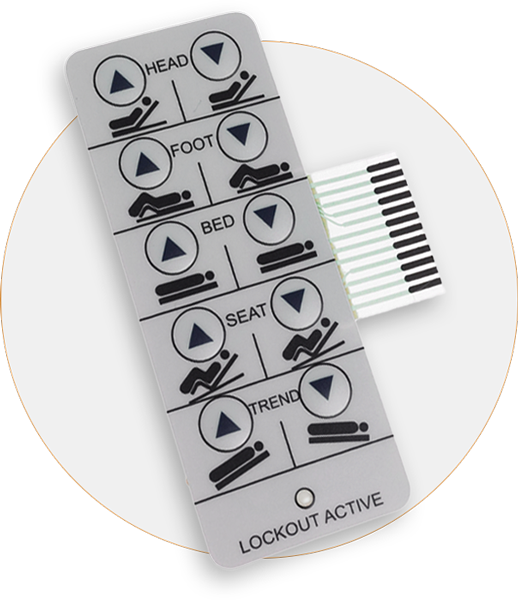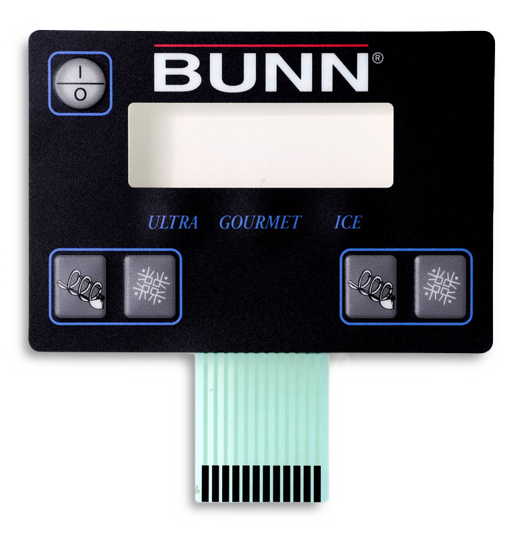How Membrane Switches Improve Durability in Harsh Environments
Recognizing the Value of Membrane Switches in Customer User Interfaces
Membrane switches are integral parts in the design of effective user interfaces, promoting not just functionality however likewise boosting aesthetic charm and individual communication. Their one-of-a-kind functions, such as resistance to customizable layouts and environmental variables, make them suitable for a diverse range of applications across numerous markets. As we explore the future fads and different advantages related to Membrane modern technology, it comes to be clear that these switches are greater than just components; they represent a merging of advancement and usefulness. The effects of this technology on customer experience are worth taking a look at additionally.
What Are Membrane Buttons?

The spacer layer, which contains adhesive homes, permits the separation of the circuit layer from the overlay, making certain that the switch stays in a non-activated state until pushed. When stress is put on the overlay, it compresses the spacer layer, linking the void and completing the circuit in the underlying layer. This design not just lowers the physical space needed for conventional mechanical buttons but also improves the durability of the device, as Membrane buttons are typically resistant to dirt, wetness, and other environmental elements.
Typically found in applications ranging from consumer electronic devices to clinical devices, Membrane buttons are essential to contemporary technology, providing a user-friendly and reliable user interface that aligns with modern design requirements.
Benefits of Membrane Buttons
While numerous switch modern technologies exist, Membrane Switches deal distinct benefits that make them specifically desirable in various applications. One of the primary advantages of Membrane switches is their portable design, which enables space-saving applications in gadgets where actual estate is limited. Their slim account not just boosts aesthetic appeal however additionally facilitates lightweight construction.
Another considerable advantage is their resistance to environmental variables. Membrane switches are commonly secured versus wetness, dust, and pollutants, making them excellent for usage sought after atmospheres, such as clinical tools and industrial equipment. This toughness expands the life-span of the button, lowering upkeep prices and improving integrity.
Additionally, Membrane switches can be personalized to fulfill specific design demands, incorporating distinct graphics and shades that boost individual communication. Their tactile feedback options can likewise be customized to supply a satisfying customer experience. Additionally, Membrane buttons are affordable, particularly in high-volume applications, as they can be generated efficiently.
Applications in Different Industries

In the customer electronics field, Membrane buttons prevail in tools such as microwaves, washing machines, and remotes. Their tactile responses and aesthetic options improve individual experience while giving a sleek, modern appearance. In addition, automotive makers utilize Membrane buttons in dashboard controls and infomercial systems, where room is restricted, and customer engagement is essential.
Additionally, the commercial field leverages Membrane buttons in control panels for machinery and tools, enabling intuitive procedure in often severe settings. Their resistance to chemicals and moisture ensures longevity and integrity in these applications. In general, the flexibility of Membrane Switches contributes significantly to their extensive use, making them important in different technical domains.
Design Factors To Consider for Membrane Switches

When designing Membrane buttons, numerous key considerations need to be considered to make certain optimal functionality and customer experience. The option of products is vital; picking durable, top notch substrates can improve the button's long life and resistance to ecological elements such as wetness and temperature level variations.
Secondly, the design of the visuals overlay should focus on quality and ease of use. Icons and text should be understandable, and the format needs to help with intuitive communication (membrane switches). Additionally, tactile comments is necessary; incorporating a responsive dome or other mechanisms can improve the user experience by supplying physical verification of activation
Another crucial variable is the button's electrical performance. Designers should guarantee that the conductive traces are properly developed to lessen resistance and avoid signal interference. This entails evaluating the required actuation pressure and guaranteeing compatibility with the electronic elements they will certainly interface with.

Future Patterns in Membrane Technology
As innovation proceeds to development, Membrane switches are poised to advance significantly, driven by technologies in products and manufacturing methods. One arising pattern is the unification of sophisticated materials, such as adaptable substratums and conductive inks, which enhance sturdiness and decrease the total weight of Membrane switches. These materials not just improve the responsive action but also enable for the design of buttons that can withstand harsher environmental conditions.
Additionally, the combination of touch-sensitive innovations is changing standard Membrane Switches right into more interactive user interfaces. Capacitive touch sensors installed within Membrane switch panels can provide a more intuitive and receptive user experience, aligning with the growing demand look what i found for smooth, modern-day layouts in customer electronics.
Furthermore, developments in printing techniques, such as electronic and 3D printing, enable rapid prototyping and customization of Membrane switches. This flexibility permits suppliers to react extra swiftly to market needs and consumer choices.
Last but not least, sustainability is becoming a substantial focus, with producers exploring eco-friendly products and procedures. As these trends unravel, the future of Membrane modern technology guarantees boosted performance, aesthetic allure, and environmental duty, solidifying their duty in innovative user interfaces throughout different sectors.
Final Thought
To conclude, Membrane Switches stand for a vital part in the style of interface, incorporating capability with visual versatility. Their benefits, including toughness and resistance to ecological aspects, make them ideal for diverse applications throughout various markets. Furthermore, thoughtful style considerations boost individual interaction and experience. As innovations in innovation proceed, the development of Membrane buttons is expected to more fine-tune customer interfaces, driving advancement and improving functionality in an increasingly intricate technological landscape.
Membrane buttons are indispensable components in the style of reliable user interfaces, helping with not just capability but likewise boosting visual appeal and user communication.Membrane Switches offer as a vital element in different customer i was reading this interfaces, promoting a seamless interaction between individuals and digital tools.While countless switch technologies exist, Membrane Switches offer unique advantages that make them especially preferable in numerous applications.In addition, Membrane buttons can be tailored to meet specific design requirements, incorporating distinct graphics and colors that improve individual helpful resources interaction.In final thought, Membrane Switches represent a vital component in the design of user interfaces, incorporating capability with visual adaptability.